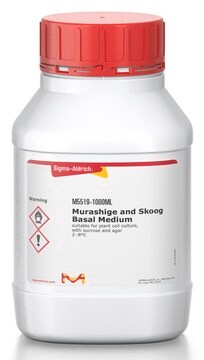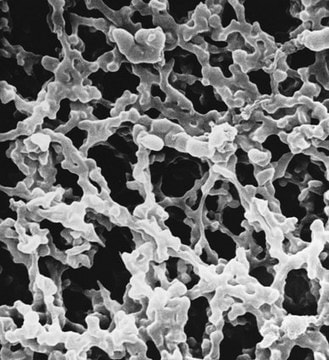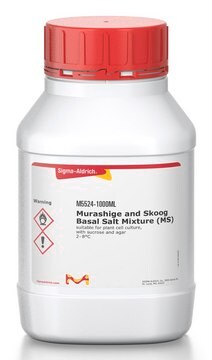A4550
Gélose
Type A, suitable for plant cell culture
Synonyme(s) :
Agar, Agar-agar
About This Item
Produits recommandés
Source biologique
algae (Rhodophyceae)
Niveau de qualité
Type
Type A
Forme
powder
Technique(s)
cell culture | plant: suitable
Température de transition
transition temp 32-38 °C (1.5%)
Résistance du gel
>650 g/cm2
Application(s)
agriculture
Température de stockage
room temp
InChI
1S/C14H24O9/c1-5-8(16)13-11(7(21-5)4-20-13)23-14-10(18)12(19-2)9(17)6(3-15)22-14/h5-18H,3-4H2,1-2H3/t5?,6-,7?,8-,9+,10-,11?,12+,13+,14?/m1/s1
Clé InChI
GYYDPBCUIJTIBM-DYOGSRDZSA-N
Vous recherchez des produits similaires ? Visite Guide de comparaison des produits
Description générale
Application
- to perform metal(loid)-related phenotyping of the Arabidopsis thaliana metal-sensitive mutant strains
- as a component of Murashige and Skoog (MS) media to culturing Arabidopsis thaliana seeds
- to culture Cicer arietinum L. (Chickpea) seeds for Agrobacterium rhizogenes mediated root transformation
Code de la classe de stockage
11 - Combustible Solids
Classe de danger pour l'eau (WGK)
WGK 1
Équipement de protection individuelle
Eyeshields, Gloves, type N95 (US)
Certificats d'analyse (COA)
Recherchez un Certificats d'analyse (COA) en saisissant le numéro de lot du produit. Les numéros de lot figurent sur l'étiquette du produit après les mots "Lot" ou "Batch".
Déjà en possession de ce produit ?
Retrouvez la documentation relative aux produits que vous avez récemment achetés dans la Bibliothèque de documents.
Les clients ont également consulté
Notre équipe de scientifiques dispose d'une expérience dans tous les secteurs de la recherche, notamment en sciences de la vie, science des matériaux, synthèse chimique, chromatographie, analyse et dans de nombreux autres domaines..
Contacter notre Service technique






